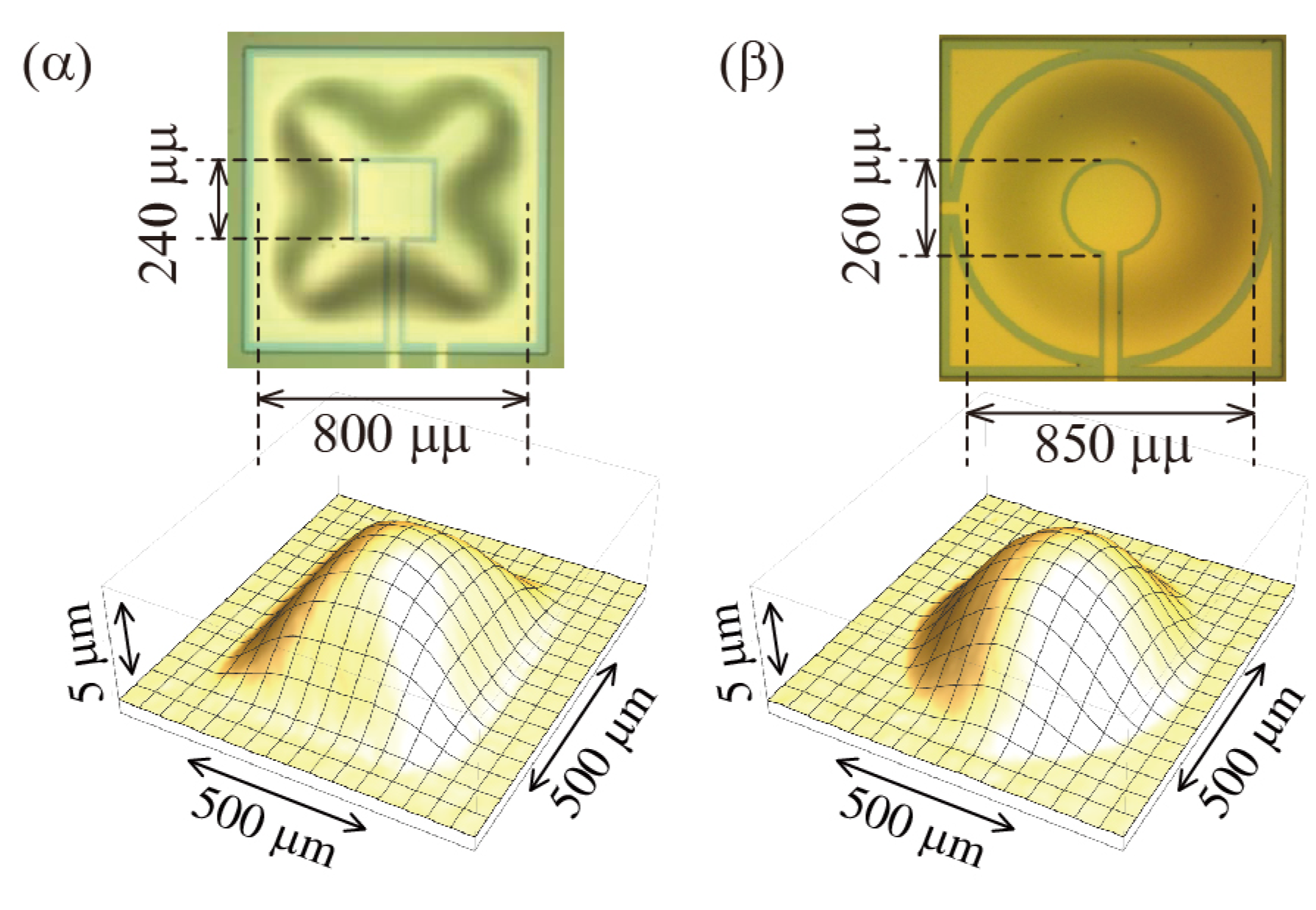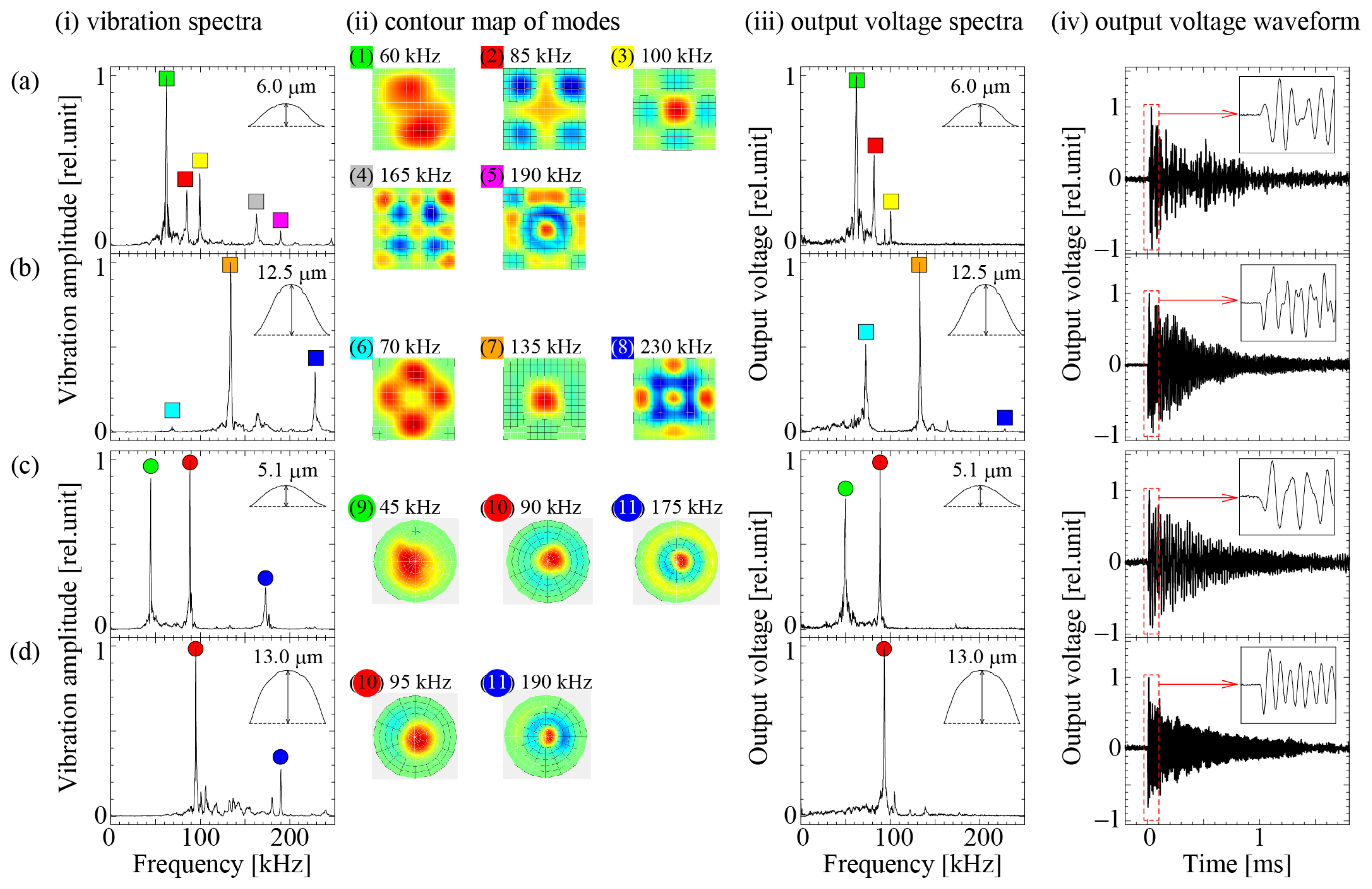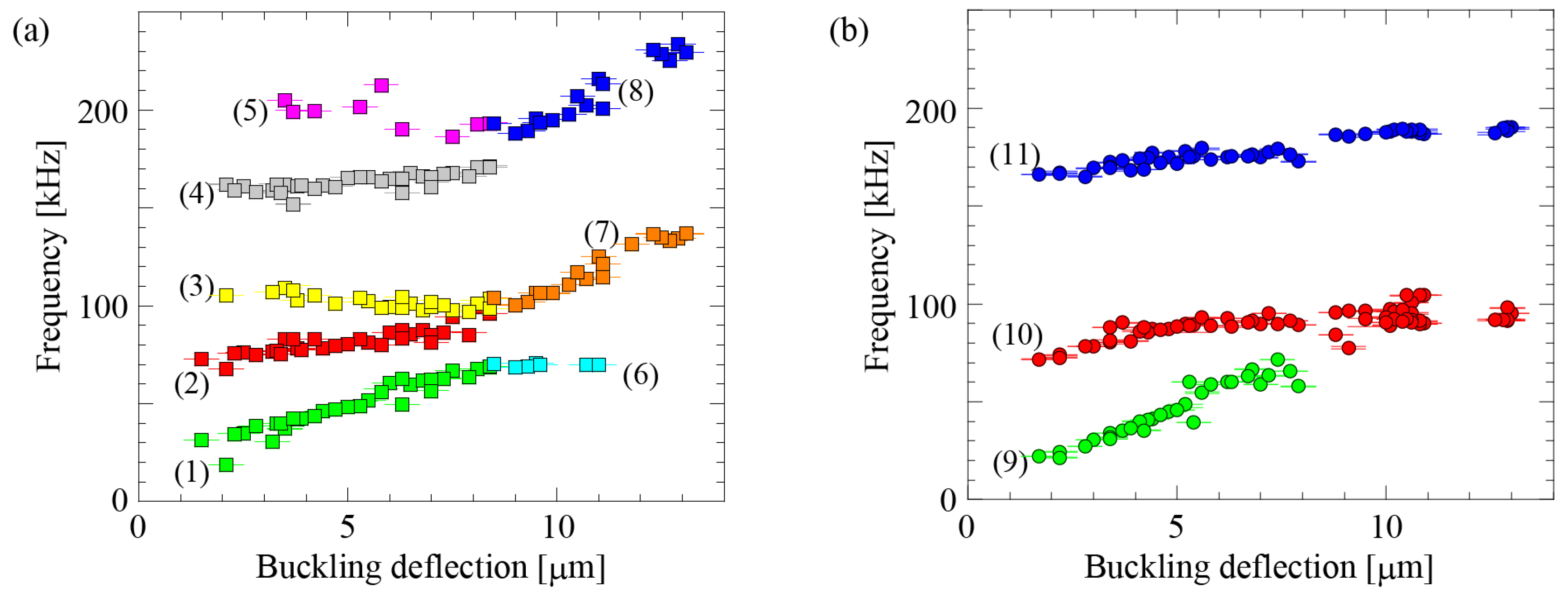Vibration Mode Investigation of Piezoelectric Ultrasonic Microsensors on Buckled Diaphragms †
Abstract
1. Introduction
2. Experiments
3. Results and Discussion
4. Conclusions
Funding
Conflicts of Interest
References
- Yamashita, K.; Nishimoto, H.; Okuyama, M. Diaphragm Deflection Control of Piezoelectric Ultrasonic Microsensors for Sensitivity Improvement. Sens. Actuators A 2007, 139, 118–123. [Google Scholar] [CrossRef]
- Yamashita, K.; Okuyama, M. Sensitivity improvement of diaphragm type ultrasonic sensors by complementary piezoelectric polarization. Sens. Actuators A 2006, 127, 119–122. [Google Scholar] [CrossRef]
- Bernstein, J.J.; Finberg, S.L.; Houston, K.; Niles, L.C.; Cross, L.E.; Li, K.K.; Udayakumar, K. Micromachined high frequency ferroelectric sonar transducers. IEEE Trans. UFFC 1997, 44, 960–969. [Google Scholar] [CrossRef]
- Wooh, S.-C.; Shi, Y. Optimization of Ultrasonic Phased Arrays. Rev. Progress Quantit. Nondestruct. Eval. 1998, 17, 883–890. [Google Scholar]
- Yamashita, K.; Chansomphou, L.; Murakami, H.; Okuyama, M. Ultrasonic micro array sensors using piezoelectric thin films and resonant frequency tuning. Sens. Act. A 2004, 114, 147–153. [Google Scholar] [CrossRef]
- Yamashita, K.; Shiomi, J.; Nishiumi, T.; Noda, M. Stress control on sol-gel PZT prepared for highly sensitive diaphragm structures of ultrasonic microsensors. In Proceedings of the 2016 Joint IEEE International Symposium on the Applications of Ferroelectrics, European Conference on Application of Polar Dielectrics, and Piezoelectric Force Microscopy Workshop (ISAF/ECAPD/PFM), Darmstadt, Germany, 21–25 August 2016. [Google Scholar]
- Yamashita, K.; Nishiumi, T.; Tanaka, H.; Noda, M. Vibration modes in impulse response of piezoelectric diaphragms for ultrasonic microsensors. In Proceedings of the 2016 IEEE 11th Annual International Conference on Nano/Micro Engineered and Molecular Systems (NEMS), Sendai, Japan, 17–20 April 2016. [Google Scholar]
- Kobayashi, S.; Kihira, M.; Kawasaki, S. Natural Frequency of Thin Plates. J. Jpn. Soc. Aeronaut. Eng. 1968, 16, 182–190. [Google Scholar] [CrossRef][Green Version]





Publisher’s Note: MDPI stays neutral with regard to jurisdictional claims in published maps and institutional affiliations. |
© 2018 by the authors. Licensee MDPI, Basel, Switzerland. This article is an open access article distributed under the terms and conditions of the Creative Commons Attribution (CC BY) license (https://creativecommons.org/licenses/by/4.0/).
Share and Cite
Yamashita, K.; Nishioka, T.; Noda, M.; Muralt, P. Vibration Mode Investigation of Piezoelectric Ultrasonic Microsensors on Buckled Diaphragms. Proceedings 2018, 2, 835. https://doi.org/10.3390/proceedings2130835
Yamashita K, Nishioka T, Noda M, Muralt P. Vibration Mode Investigation of Piezoelectric Ultrasonic Microsensors on Buckled Diaphragms. Proceedings. 2018; 2(13):835. https://doi.org/10.3390/proceedings2130835
Chicago/Turabian StyleYamashita, Kaoru, Tomoki Nishioka, Minoru Noda, and Paul Muralt. 2018. "Vibration Mode Investigation of Piezoelectric Ultrasonic Microsensors on Buckled Diaphragms" Proceedings 2, no. 13: 835. https://doi.org/10.3390/proceedings2130835
APA StyleYamashita, K., Nishioka, T., Noda, M., & Muralt, P. (2018). Vibration Mode Investigation of Piezoelectric Ultrasonic Microsensors on Buckled Diaphragms. Proceedings, 2(13), 835. https://doi.org/10.3390/proceedings2130835




